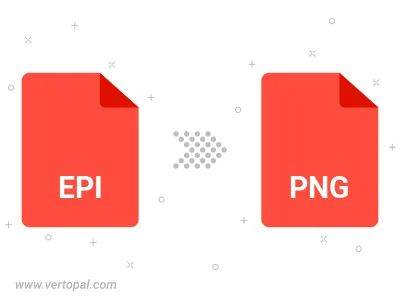Convert EPI to PNG ANIMATED
Convert EPI images to PNG ANIMATED format, edit and optimize images online and free.

The EPI file extension stands for Encapsulated PostScript Interchange, a format developed by Adobe in the late 1980s. It facilitates the integration of vector graphics and text into documents for high-resolution printing. EPI files, a variant of EPS, are primarily used in graphic design and desktop publishing to ensure consistent and scalable image quality. This format employs Adobe's PostScript language to describe the appearance of a single page, making it ideal for embedding illustrations in various documents.
Animated PNG is a file extension for animated raster graphics. Developed as an extension of the Portable Network Graphics (PNG) format, Animated PNG allows for animation while maintaining PNG's lossless compression and transparency features. Introduced by Mozilla in 2004, it initially garnered limited support but gained traction for its compatibility and efficiency. Animated PNG is ideal for web usage, offering animation without the substantial file size of GIFs, making it suitable for high-quality web animations and UI elements.
Choose any EPI image from your computer, or drag & drop a EPI file onto this page.
Use the tools available for converting EPI to PNG ANIMATED and click the Convert button.
Let the conversion process finish, then download your PNG ANIMATED image.

To change EPI format to PNG ANIMATED, upload your EPI file to proceed to the preview page. Use any available tools if you want to edit and manipulate your EPI file. Click on the convert button and wait for the convert to complete. Download the converted PNG ANIMATED file afterward.
Follow steps below if you have installed Vertopal CLI on your macOS system.
cd to EPI file location or include path to your input file.Follow steps below if you have installed Vertopal CLI on your Windows system.
cd to EPI file location or include path to your input file.Follow steps below if you have installed Vertopal CLI on your Linux system.
cd to EPI file location or include path to your input file.